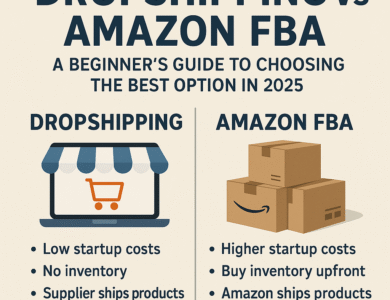
Networking is essential for anyone looking to grow their career or business. Whether you’re attending events or connecting with others on LinkedIn, knowing how to make meaningful connections can set you apart. In this article, we’ll explore practical tips on how to network at events and on LinkedIn like a pro. From setting clear goals to following up effectively, we’ve got you covered with strategies that work.
Key Takeaways
- Define your networking goals to stay focused during events.
- Engage genuinely with others to create lasting connections.
- Follow up after meeting someone to reinforce the relationship.
- Utilize LinkedIn groups and events to meet industry peers.
- Keep track of your networking efforts to measure progress.
Building Your Networking Strategy
Identifying Your Networking Goals
Before you even think about attending an event or sending a LinkedIn request, it’s important to figure out why you’re networking in the first place. What do you hope to achieve? Are you looking for a new job, trying to expand your business, or just wanting to learn more about your industry? Having clear goals will help you focus your efforts and make your networking more effective.
- Define your primary networking objective.
- Set specific, measurable, achievable, relevant, and time-bound (SMART) goals.
- Consider both short-term and long-term objectives.
It’s easy to get caught up in the act of networking itself, but without a clear purpose, you might end up wasting time and energy on connections that don’t really benefit you.
Researching Events and Opportunities
Once you know what you want to achieve, it’s time to find the right places to network. This means doing your homework and identifying events and opportunities that align with your goals. Look beyond the obvious conferences and consider workshops, meetups, and even online communities. Effective networking involves building genuine relationships, not just collecting contacts.
- Use online search engines and industry websites to find relevant events.
- Check out professional organizations and alumni networks.
- Explore online communities and forums related to your field.
Creating a Networking Plan
Now that you’ve identified your goals and found some promising opportunities, it’s time to put together a plan. This doesn’t have to be anything fancy, but it should outline your approach to networking and help you stay organized. Think about who you want to connect with, what you want to say, and how you’ll follow up after the event. A well-thought-out plan can make all the difference in your networking success.
- Identify key people you want to connect with.
- Prepare an elevator pitch or short introduction.
- Plan your follow-up strategy, including sending personalized messages.
Mastering In-Person Networking

Approaching New Connections
Walking into a crowded room full of strangers can feel like stepping onto a stage without a script. It’s intimidating, but remember, most people are just as eager to connect as you are. The key is to be approachable and genuine. Start with a smile and confident body language. A simple “Hi, I’m [Your Name]” goes a long way. Don’t be afraid to initiate conversations; many attendees are waiting for someone to make the first move. Think of it as an opportunity to learn something new and expand your horizons.
Engaging in Meaningful Conversations
It’s not just about collecting business cards; it’s about creating lasting impressions. Here’s how to make your conversations count:
- Listen Actively: Pay attention to what the other person is saying, ask follow-up questions, and show genuine interest.
- Find Common Ground: Look for shared interests or experiences to build rapport. It could be anything from the event itself to a mutual connection.
- Share Your Story: Be prepared to talk about yourself and your work in a concise and engaging way. Highlight what you’re passionate about and what makes you unique.
- Ask Open-Ended Questions: Instead of yes/no questions, ask questions that encourage the other person to elaborate and share their thoughts.
Remember, networking is a two-way street. It’s about building relationships, not just extracting information. Focus on creating a connection and offering value.
Following Up After Events
The real magic happens after the event. Don’t let those valuable connections fade away. Here’s a simple follow-up strategy:
- Send a Personalized Email: Within 24-48 hours, send a brief email referencing your conversation and expressing your interest in staying in touch. AI is transforming how we network, but a personal touch is still key.
- Connect on LinkedIn: Send a connection request with a personalized message reminding them of your conversation and mentioning something specific you discussed.
- Offer Value: Share a relevant article, make an introduction, or offer to help them in some way. This shows that you’re genuinely interested in building a relationship.
Following up consistently is what separates the casual networker from the pro. It’s about nurturing those initial connections into meaningful, long-term relationships.
Leveraging LinkedIn for Networking
LinkedIn isn’t just a digital resume; it’s a powerful tool for building and maintaining professional relationships. It’s about more than just collecting connections; it’s about engaging, sharing, and building a reputation in your field. Let’s explore how to make LinkedIn work for you.
Optimizing Your LinkedIn Profile
Your LinkedIn profile is your digital handshake. It’s often the first impression you make, so make it count. Think of it as your personal landing page. Make sure you use a professional and friendly profile picture, craft an effective headline, and develop a comprehensive, eye-catching summary. Additionally, optimize your work experience to attract connections.
Connecting with Industry Professionals
Networking on LinkedIn is about more than just sending connection requests. It’s about finding the right people and building real relationships. Here’s how:
- Search Strategically: Use LinkedIn’s advanced search filters to find people in your industry, with specific skills, or who work at companies you admire.
- Personalize Your Invitations: Don’t just send the default connection request. Mention something specific that caught your eye on their profile or a shared connection.
- Seek Introductions: If you have a mutual connection, ask for an introduction. A warm introduction can go a long way.
Engaging with Content and Groups
LinkedIn is a content hub. Engaging with posts and participating in groups can significantly expand your reach and build your network.
- Share Relevant Articles: Post articles, videos, and insights that are relevant to your industry and your network. This positions you as a thought leader.
- Comment Thoughtfully: Don’t just “like” posts. Leave thoughtful comments that add value to the conversation.
- Join Industry Groups: Participate in relevant LinkedIn groups. Share your expertise, ask questions, and connect with other members.
LinkedIn groups are another great way to find like-minded individuals. Similarly, you can filter for groups based on industry and job areas. From there, be sure to be proactive and reach out with people in the group. If you’re both in the same group, they’ll also be more likely to connect with you.
Utilizing LinkedIn Events Effectively
LinkedIn events can be a goldmine for networking if you know how to use them right. It’s not just about RSVPing; it’s about active participation and strategic follow-up. Let’s explore how to make the most of these opportunities.
Finding Relevant Events
First things first, you need to find the events that align with your goals. Don’t just sign up for anything and everything. Be selective. Start by using the LinkedIn search bar and entering keywords related to your industry, job function, or interests. Then, filter the results by “Events.” LinkedIn will also suggest events based on your profile and connections, so make sure your profile is up-to-date. Another way is to use social selling software to find events that your target audience is attending.
Participating Actively During Events
Active participation is key. Don’t just be a passive observer. Engage in the chat, ask questions, and share your insights. If it’s a webinar, use the Q&A feature. If it’s a virtual networking event, be ready to introduce yourself and participate in discussions. Sharing your thoughts during the live event can make people want to connect with you!
Following Up with Attendees
The real magic happens after the event. Don’t let those connections go cold. Send personalized connection requests to people you interacted with during the event. Mention something specific you discussed to jog their memory. A simple “Great chatting with you about [topic] at the event!” can go a long way. You can even connect with industry professionals who organized the event.
Following up is where many people drop the ball. Set aside time within 24-48 hours after the event to send those connection requests and personalized messages. This shows you’re genuinely interested in building a relationship, not just collecting connections.
LinkedIn events are great because you can find just about every type of event idea:
- Networking events for like-minded people.
- Online workshops.
- Webinars.
- Product launches.
- Meetups, conferences, and more.
Creating Valuable Connections

Personalizing Connection Requests
Generic connection requests are a no-go. Always personalize your messages. Take a moment to look at the person’s profile and find something specific to mention. Did they recently publish an article? Do you share a common interest or connection? Mentioning these details shows you’ve actually taken the time to learn about them and aren’t just sending out a mass request. This is especially important on LinkedIn for networking.
Building Relationships Over Time
Networking isn’t a one-time thing; it’s about building relationships. Think of it as planting seeds. You need to nurture those connections over time. Engage with their content, offer support, and stay in touch. Don’t just reach out when you need something. Be genuinely interested in their work and their success.
Building a strong network is like tending a garden. It requires consistent effort, patience, and a willingness to give more than you take. The rewards, however, are well worth the investment.
Offering Value to Your Network
Think about what you can bring to the table. How can you help your connections? Can you offer advice, share resources, or make introductions? Networking shouldn’t be a one-way street. The more you give, the more you’ll receive in return. It’s about creating a mutually beneficial relationship. Here are some ways to offer value:
- Share relevant articles and resources.
- Offer to provide feedback on their work.
- Make introductions to other people in your network.
- Celebrate their successes and offer support during challenges.
Networking Etiquette and Best Practices
Understanding Professional Boundaries
Navigating the world of networking requires a keen awareness of professional boundaries. It’s easy to get caught up in the excitement of making new connections, but it’s important to maintain a respectful distance. Avoid overly personal questions or comments that could make someone uncomfortable. Think about it like this: you’re building a professional relationship, not necessarily a friendship (at least, not initially). Keep interactions focused on career-related topics, industry insights, and mutual interests. Don’t overstay your welcome at events, and be mindful of people’s time. A quick, meaningful conversation is often more effective than a long, rambling one.
Being Respectful and Genuine
Authenticity is key to successful networking. People can usually spot insincerity, and it’s a major turn-off. Instead of trying to impress others with a fabricated persona, focus on being yourself. Share your genuine interests and passions, and listen attentively when others speak. Show respect for their opinions and experiences, even if you don’t agree with them. Remember, networking is about building relationships, and relationships are built on trust and mutual respect. A simple rule of thumb: treat everyone you meet with the same level of courtesy and consideration you would expect from them. This approach will help you create lasting, meaningful connections.
Avoiding Common Networking Mistakes
There are several common pitfalls that can derail your networking efforts. One of the biggest is treating networking as a purely transactional activity. It’s not just about collecting business cards or asking for favors. It’s about building relationships and offering value. Another mistake is failing to follow up after meeting someone. A quick email or LinkedIn message can make a big difference in solidifying a connection. Also, avoid dominating conversations or talking excessively about yourself. Networking is a two-way street, so be sure to listen as much as you speak. Finally, don’t be afraid to approach new people, but do so with confidence and respect. A simple introduction and a genuine interest in learning more about them can go a long way. Here are some things to avoid:
- Only reaching out when you need something.
- Forgetting to follow up after a meeting.
- Being unprepared or uninformed about the event or people you’re meeting.
Networking is more than just exchanging business cards; it’s about creating genuine connections and building lasting relationships. Focus on offering value and being a good listener, and you’ll be well on your way to networking success.
Tracking Your Networking Progress
It’s easy to get caught up in the act of networking itself, attending events, and sending connection requests. But are you actually seeing results? Tracking your progress is key to understanding what’s working and what’s not. It helps you refine your approach and make the most of your time and effort.
Keeping a Networking Journal
Think of this as your networking diary. Jot down who you met, where you met them, and what you talked about. Include any follow-up actions you took or plan to take. This doesn’t have to be fancy; a simple spreadsheet or even a notebook will do. The point is to have a record you can refer back to. I find it useful to include:
- The person’s name and contact information.
- The date and location of the meeting.
- Key discussion points and shared interests.
- Any agreed-upon follow-up actions.
Setting Milestones for Connections
Don’t just aim to collect as many connections as possible. Set specific, measurable, achievable, relevant, and time-bound (SMART) goals. For example, aim to connect with five new people in your industry each month or to schedule one informational interview per week. Having these milestones keeps you focused and motivated.
Evaluating Your Networking Success
Regularly review your networking activities and assess their impact. Are you getting closer to your career goals? Are you building meaningful relationships? Are your LinkedIn connections leading to new opportunities? If not, it might be time to adjust your strategy. Consider these questions:
- How many new connections have you made in the past month?
- How many of those connections have led to meaningful conversations?
- Have any of your connections resulted in job leads, collaborations, or other opportunities?
It’s not just about the number of connections you have, but the quality of those connections and the value you’re getting from them. Are you building relationships that are mutually beneficial? Are you learning from others and expanding your knowledge? If not, it might be time to re-evaluate your approach.
Wrapping It Up: Your Networking Journey
So, there you have it! Networking, whether at events or on LinkedIn, doesn’t have to be this big scary thing. Just remember to be yourself, show genuine interest in others, and don’t be afraid to reach out. It’s all about building relationships, not just collecting contacts. Follow up after you meet someone, keep track of your conversations, and engage with your network regularly. The more you practice, the easier it gets. And who knows? Those connections could lead to amazing opportunities down the line. So get out there, start connecting, and make the most of your networking journey!
Frequently Asked Questions
What is the first step in networking at events?
Start by figuring out what you want to achieve. Are you looking for a job, trying to meet new people, or wanting to learn more about your field?
How can I find events to attend?
You can search online for industry events, check local community boards, or look at social media platforms like LinkedIn for upcoming events.
What should I say when I meet someone new?
Introduce yourself, share a bit about what you do, and ask them about their work. It’s helpful to show genuine interest in the other person.
How important is it to follow up after meeting someone?
Following up is very important! It helps strengthen the connection. Send a quick message or email thanking them for the chat and mentioning something you talked about.
How can I use LinkedIn to network?
Make sure your LinkedIn profile is complete and professional. Connect with people in your field, join groups, and engage with posts to get noticed.
What are some common mistakes to avoid when networking?
Avoid being too pushy or only talking about yourself. It’s important to listen and build a genuine connection with others.



